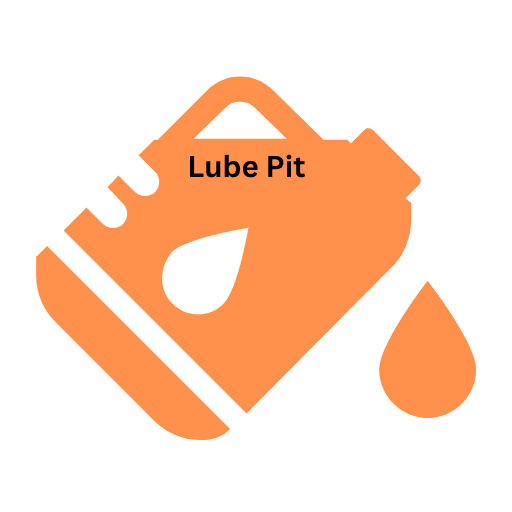This is the question that’s on the mind of many car owners. Is the mess, the time, and the potential for error worth the savings? The truth, as with most things in the automotive world, is, it depends.
Let’s break down the factors.
Table of Contents
What’s the Real Cost of an Oil Change at a Shop?
The price of a professional oil change can vary wildly, so it’s important to understand what you’re paying for and why the price tag can fluctuate.
What are the different types of oil change services offered and their corresponding prices?
Most shops offer a tiered approach, generally starting with a basic service using conventional oil, and ascending to more premium offerings with synthetic or synthetic blend oils.
A basic conventional oil change can range from $30 to $50, but this can significantly increase depending on your region and the shop.
Synthetic blends might be in the $50 to $70 range, while a full synthetic change will cost $70 to $130 or even more for luxury vehicles or special cases. These prices can also depend on the quantity of oil the specific engine needs.
| Oil Change Type | Typical Price Range |
| Conventional Oil | $30 – $50 |
| Synthetic Blend | $50 – $70 |
| Full Synthetic Oil | $70 – $130+ |
What additional fees or charges often get tacked on during a professional oil change?
It’s not just the oil and filter you pay for. Many shops will recommend additional services or “upsells” such as engine flushes, new air filters, or tire rotations.
These add-ons can quickly inflate your bill, sometimes doubling it or more. Other charges may include shop supply fees and disposal fees. Always ask for a breakdown of costs before agreeing to any service.
How do prices vary between quick lube shops, dealerships, and independent mechanics?
Quick lube shops are generally the most budget-friendly for basic oil changes, as they rely on high volume to keep prices competitive.
Dealerships, on the other hand, usually charge a premium, reflecting higher overhead and the assumption that they offer specialized service for specific brands.
Independent mechanics can fall anywhere in between, often providing more personalized service and sometimes more competitive pricing, although their focus might be more on full-service repairs and less on express services.
What about convenience – how does the time commitment impact the overall “cost”?
Professional oil changes, especially at a quick lube shop, are convenient and take little time, typically ranging from 15 to 45 minutes. This saves time and allows you to do other things while the work is done for you.
This convenience has its own “cost.” We need to consider the true value of our free time and decide if the convenience factor justifies the higher price of professional service.
What Equipment and Supplies Will You Need for a DIY Oil Change?
Now, let’s turn our attention to the DIY side of things. Changing your own oil requires some upfront investment, but those costs can pay off in the long run.
What are the basic tools and safety equipment every DIYer needs?
To safely and effectively change your oil at home, you’ll need a few essential items. This includes a wrench for the drain plug, an oil filter wrench, a new oil filter, a funnel, an oil catch pan, some rags or shop towels, and safety equipment such as gloves and safety glasses.
A jack and jack stands might also be required if your car doesn’t have enough ground clearance. You may also want to purchase wheel chocks to stop the vehicle from rolling away during the process.
What types of oil and filters are required, and how do their prices vary?
You’ll need to consult your car’s manual for the correct type and viscosity of oil. Oil comes in conventional, synthetic blend, and full synthetic, with each varying in price, with synthetics costing more.
Filters also have varied costs based on quality. For the best quality and protection, make sure to buy a filter that is OEM or an equivalent of it. Prices for oil can range from $30 to $100 per oil change and $5 to $30 for an oil filter depending on the type and quality.
| Item | Typical Price Range | Notes |
| Oil (5 quarts) | $20 – $80 | Varies by type and brand |
| Oil Filter | $5 – $30 | Varies by brand and vehicle |
| Oil Drain Pan | $10 – $25 | Reusable |
| Oil Filter Wrench | $8 – $20 | Adjustable or vehicle-specific |
| Wrench for Drain Plug | $10 – $20 | Based on your car’s plug size |
| Funnel | $3 – $10 | |
| Rags or Shop Towels | $5 – $10 | |
| Gloves | $5 – $15 | |
| Safety Glasses | $5 – $20 | |
| Jack & Jack Stands (if needed) | $50 – $150 | Initial Investment |
| Wheel Chocks | $10-$25 | Safety |
Are there any costs associated with properly disposing of used oil and filters?
Many auto parts stores and recycling centers will accept used oil and filters for free or a small fee, but this can vary depending on your location and local rules.
However, some places may not take used oil for free, and it’s crucial to dispose of it correctly. The cost could range from free to $10 depending on where you go.
What’s the long-term investment cost of having the necessary tools?
The initial investment in tools can seem costly, but these tools will last for many oil changes. The good news is that after purchasing, these items will reduce the cost of each future oil change.
If you are just starting out with doing your own oil change you might not have to buy all the tools as some of them may be lying around the house already.
How long does it take for DIY and at the dealership?
The first time you change your oil, it can take an hour or two, including setup, doing the oil change, and clean-up. However, with practice, most experienced DIYers can complete an oil change in 30 to 60 minutes. It is also important to not take shortcuts or rush the process to avoid potential issues and do the job correctly and effectively.
DIY: 30-60 minutes (experienced), longer for beginners
Dealership: 1-2 hours (waiting time included)
Do I have the knowledge to do an oil change?
Before diving in:
- Ensure you possess the necessary knowledge and skills.
- Consult your car’s manual for specific instructions and safety precautions.
- Familiarize yourself with the location of the drain plug, oil filter, and proper disposal procedures for used oil and the filter. If you need clarification on any step, err on the side of caution and seek professional help.
What are the things you must consider before an oil change?
Before you commit to DIY oil changes, consider these additional factors:
- Satisfaction vs. excitement: Completing a DIY oil change might bring satisfaction from saving money, but it may not have the same “wow” factor as other DIY projects like home improvement.
- Potential mistakes: During an oil change, mistakes could lead to costly repairs. Using the wrong oil, improperly installing the filter, or buying incorrect parts can all create problems.
- Messiness: Let’s face it: oil changes are messy. No matter how careful you are, you’ll likely make a mess every time.
- Safety concerns: Working under a car has inherent risks, including the possibility of the car falling on you. Additionally, exposure to used oil can harm you, your pets, and the environment.

Is it Cheaper to Change Your Own Oil?
Now that you understand the upfront costs of DIY oil changes let’s compare them to typical garage prices. Remember, the exact cost depends on the specific oil and filter you choose and where you buy them.
However, a typical garage oil change might cost around $50-$75, while the oil and filter for a DIY change might cost around $25-$40. You could save $15-$35 per oil change by doing it yourself.

Is DIY Right For You, Your Car, and Your Skillset?
Before you jump in, assess if DIY is right for you.
How do you know if you have the right skills and aptitude for changing oil?
Changing oil is relatively straightforward, but it requires some mechanical aptitude, and knowing how to use tools is essential. If you feel confident in basic mechanical tasks and have a desire to learn, then it’s worth trying. If not, it’s okay to rely on professionals to do it.
Is changing oil a safe task for all individuals or should they avoid it?
Safety is paramount. If you have physical limitations, like back problems, or if you don’t feel comfortable working under your vehicle, it might be best to leave it to the pros. Safety should always be the main priority.
What are the most common mistakes people make when doing DIY oil changes?
Common mistakes include using the wrong type of oil or filter, over-tightening the drain plug or filter, and not disposing of waste correctly. Attention to detail is essential to avoiding these issues. It’s very important to look at the vehicle’s manual and to know how much oil to put into the car for the specific model you have.
What are the specific vehicle requirements that make DIY oil changes more challenging?
Some vehicles have specific requirements like cartridge filters, low ground clearance, or unique drain plug locations that can make DIY oil changes more complex. It is important to check to see if there are any unique requirements for your specific car before trying to change the oil yourself.
The Verdict
Whether changing your oil is cheaper depends on several factors. If you’re cost-conscious, handy, and have the time, DIY can save you money in the long run. However, the dealership route might be better if convenience and mess-free service are priorities. Ultimately, the choice comes down to your personal preferences and priorities.
FAQs
Where can I dispose of used oil?
Many auto parts stores and quick lube shops will accept used oil for recycling. You can also check with your local municipality for hazardous waste disposal guidelines.
What are the environmental implications of DIY oil changes?
Improper disposal of used oil can harm the environment. Professional service providers ensure environmentally responsible disposal according to EPA regulations.
What if I make a mistake during a DIY oil change?
Mistakes can lead to costly repairs. If you’re unsure about your mechanical skills, it’s safer and potentially more cost-effective to seek professional help.
What tools do I need for a DIY oil change?
Basic tools include an oil pan, funnel, wrenches, pliers, and jack/ramps. Consult your car’s manual for specific requirements.
Is it challenging to change my own oil?
With the proper knowledge and preparation, it’s manageable. Consult your car’s manual and online resources for detailed instructions and safety precautions.

